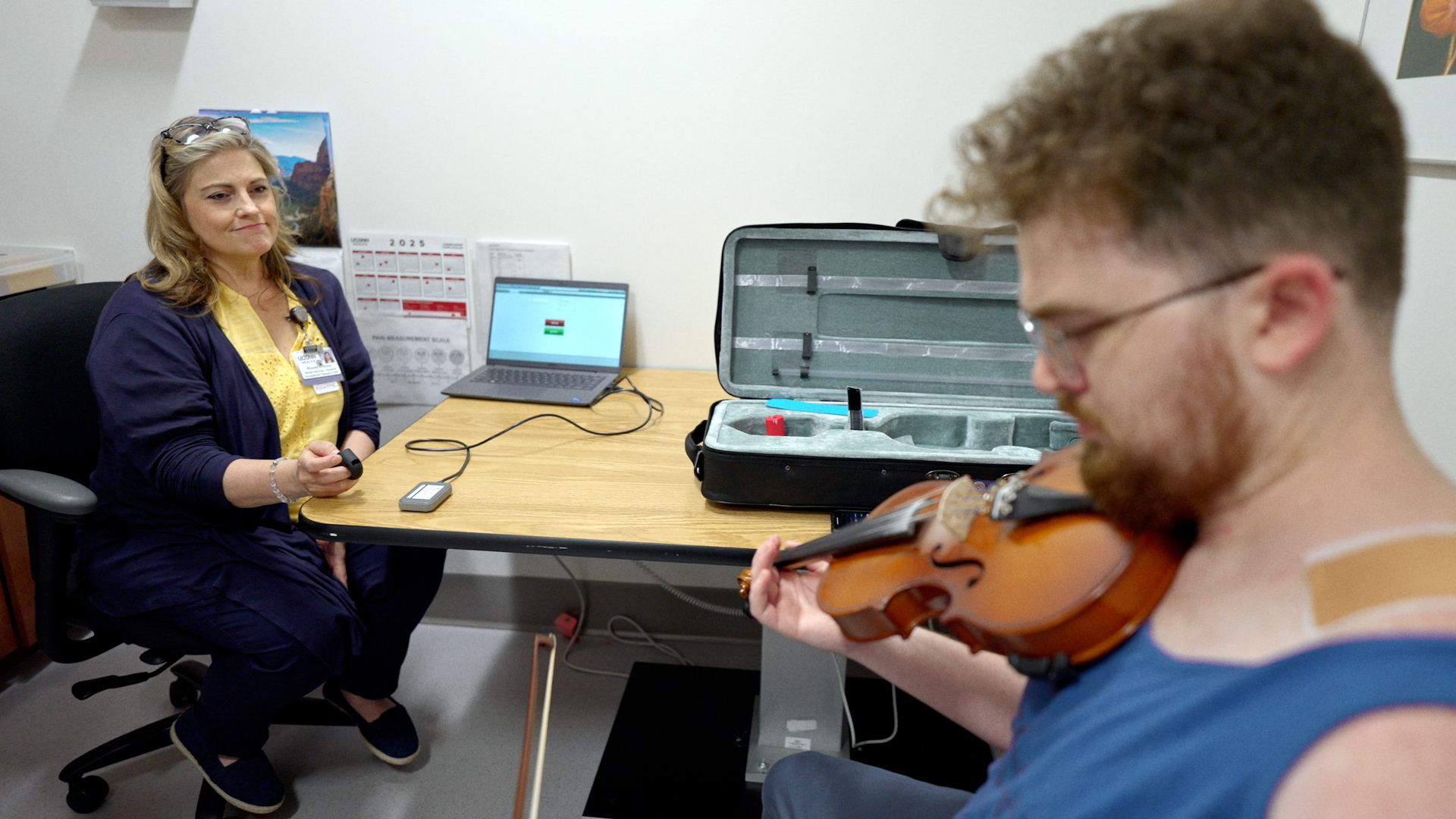 With the next presidential election just 10 months away, and increasingly negative press concerning the integrity of touch-screen voting machines, Connecticut residents may feel confident that their votes are not at the mercy of uncertain technology. In 2006, Connecticut Secretary of State Susan Bysiewicz inked an agreement with a team of UConn engineering faculty to provide advice to the state regarding new voting technology and to assist in the certification and acceptance testing of the AccuVote Optical Scan (AV-OS) voting machines that Connecticut purchased to replace the old lever machines. These optical scan machines, which use voter-verified paper ballots, offer superior accountability and fewer opportunities for vote fraud versus the controversial touch-screen machines. (See our earlier story.)
With the next presidential election just 10 months away, and increasingly negative press concerning the integrity of touch-screen voting machines, Connecticut residents may feel confident that their votes are not at the mercy of uncertain technology. In 2006, Connecticut Secretary of State Susan Bysiewicz inked an agreement with a team of UConn engineering faculty to provide advice to the state regarding new voting technology and to assist in the certification and acceptance testing of the AccuVote Optical Scan (AV-OS) voting machines that Connecticut purchased to replace the old lever machines. These optical scan machines, which use voter-verified paper ballots, offer superior accountability and fewer opportunities for vote fraud versus the controversial touch-screen machines. (See our earlier story.)
Under the auspices of the Voting Technology Research (VoTeR) Center at UConn, the faculty team recently released the findings of their pre-election audit of the programming of memory cards used in AV-OS systems in the November 2007 elections. The team found that the memory cards were properly programmed for the election, and that the AV-OS systems used by Connecticut voters were correctly prepared for elections so long as poll workers accurately followed procedure.
The VoTeR Center team is made up of four faculty members from the Department of Computer Science & Engineering: Drs. Alexander Shvartsman (principal investigator), Aggelos Kiayias, Laurent Michel and Alexander Russell, assisted by engineering graduate students Andy See, Seda Davtyan, Karpoor Narasimha, Nicolas Nicolaou and Sotiris Kentros. The team’s first audit was conducted as required under Public Act 07-194, An Act Concerning the Integrity and Security of the Voting Process. The VoTeR Center is also currently performing a post-election audit of the memory cards, along with an analysis of the hand-counted audit of 10% of the districts. The hand-counted audit, not conducted by the VoTeR Center, involves hand counting the ballot votes and comparing them against the results tabulated by the scanning machines.
Election Setup
The VoTeR Center technology audit began before the 2007 elections. Connecticut contracts with LHS Associates of Methuen, MA, a distributor/vendor associated with the voting machine manufacturer, Premier Election Solutions (formerly Diebold). LHS personnel program the memory cards that optical scan machines use to record the votes. The cards are programmed with the slate of candidates per office, and any ballot issues to be voted on within each district. After programming the memory cards, in advance of the elections LHS sends each district four identical, pre-tested cards.
At that point, the integrity of the vote falls upon the precinct polling personnel. For the November 2007 elections, poll personnel were instructed to conduct a pre-election test on all four cards. For the pretest, election personnel were to insert the memory cards into the optical scan machines, set them to pre-election mode, fill out a number of hand-ballots and feed the ballots into the optical scan machines, and then compare the test ballot votes against the tallies recorded on the memory cards. After testing each card, the election personnel were to reset the cards to “election” mode, a step that also resets all vote counts to zero.
Next, precinct personnel were to randomly select one out of the four cards and send it to the VoTeR Center in Storrs, and to insert one of the three remaining memory cards into the sealed compartment of each of the two AV-OS machines assigned to their district.
Process & Results
Of the 695 Connecticut polling places used in the November elections, the team audited a total of 522 randomly selected memory cards. The VoTeR Center’s audit involved reverse-engineering of the optical scan machines to enable the accurate examination of the contents of the memory cards. The memory cards were subjected to several integrity tests, including the presence of correct programs for the machines and absence of any extraneous or malicious code. The team summarized its findings in a report submitted to the Secretary of State’s office in January. The report also included recommendations to ensure the integrity of future votes.
Dr. Shvartsman said the team was generally pleased with the audit results, given that over 95% of the memory cards were correctly programmed, and the cards that contained incorrect data were readily identified by the poll workers who attempted to use them. Among the issues identified, several resulted from the election personnel either misinterpreting, or not accurately following, the instructions. For example, more than 1/4th of the districts sent a memory card after rather than prior to the election as stipulated. In addition, Dr. Shvartsman noted, some precincts did not conduct the required pre-election test on all four cards received from LHS, and some improperly carried out the series of test steps. In nearly every case, Dr. Shvartsman said, the problems detected by the VoTeR Center would not have compromised the outcome of the votes. He suggested that better training of the precinct voting personnel, who are volunteers, and clearer instructions, would eliminate nearly all of the problems encountered.
Only two problems the VoTeR team encountered were viewed as potentially serious. One of the 522 memory cards submitted to the center for audit, one registered 19 votes and an “election” mode setting – a serious concern, since every card should have registered zero votes. According to Dr. Shvartsman, the polling personnel would have found and resolved this problem if they had prepared a required and crucial “zero count” report prior to the election. The report is an important monitor that allows personnel to ensure all of the vote counts register zero. While the 19-vote card is cause for concern, Dr. Shvartsman said, “This situation is easily identified by a diligent poll worker.”
Another surprise was the number of audited cards, totaling 3.5 percent, found to contain “junk” that rendered them unreadable. Dr. Shvartsman said that if poll personnel pretested the memory cards as required, they would have identified the cards as faulty and not used them in the optical scan voting machines. The fact that such a high number were unusable suggests the programming vendor, LHS Associates, may not have tested every card before sending them to the Connecticut districts.
Connecticut a Leader
Dr. Shvartsman offered Connecticut voters reassuring comments about the integrity of the elections. “Despite the imperfections we have experienced here in Connecticut, the state ranks among the most forward-thinking and transparent in terms of transitioning to the new voting technology. The election processes and the proper use of technology are being improved with every election. Connecticut is using voter-verified ballots, and together with pre-election and post-election technology audits, and the hand-counted post-election audits and recounts, the safeguards are in place for verification of the accuracy of the election outcome. In Connecticut we know what’s in the voting machine memory cards, and this is unique in the nation.”


